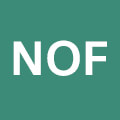BEHANDELINGEN
Babytaal
Osteopathy Laarman and baby language:
Since babies are one of our largest target groups within the practice, we wanted to specialize on a deeper level. In this way we can tailor the total picture of advice and treatment even better to the baby’s needs.
Even if babies aren’t capable of having a nice talk yet, they communicate with us all day long. In addition to the non-verbal behavior of the baby, the baby uses cries and sounds to communicate. After all, he/she has nothing else to make clear what he/she wants. So if you’d like to understand and know your baby even better, come and join one of our Baby Language meetings. Or request an individual consultation at our practice. And if needed, we are happy to visit you at your home at an increased rate.
For example, the osteopath can treat a baby for colic and/or restless sleep.
Be careful, because if every cry of the baby is interpreted by the caretakers as hunger, an overload of lactose enters the baby’s body and this will of course cause colic.
Or if a baby suffers from a stuck burp, and mom breastfeeds her baby or gives the bottle, the baby might burp afterwards resulting in spitting up food. It then seems as if the baby has stomach issues or trouble digesting, whereas the problem lies in the correct interpretation of the baby’s cries.
With our knowledge, skills and passion for anatomy, embryology and physiology of the baby and the universal baby language, we can provide you with optimal advice and treatment where necessary. Our mission is a happy and healthy baby!
The Dunstan Baby Language Method
Newborns make five different sounds from birth, each with a very specific meaning. A sound for hunger, a sound for tiredness, a sound for a stuck burp, a sound for colic and a sound for discomfort. These sounds are based on the basic reflexes of the baby. Every baby has these reflexes, no matter what language you speak as a parent. The reflexes point at certain needs, so when you’re able to recognize the reflexes, you’re also able to recognize what the baby needs. Recognizing these needs in time has major advantages for parents.
For example, when your baby is hungry, sucking will be a reflex. As a result of that sucking, the tongue will move up and down in the baby’s mouth and create the sound ‘Neh’. The sooner you recognize this, the sooner you’ll be able to feed your baby. Your baby won’t need to cry any longer to let you know something is wrong, which is nice for the baby, and also for you. From about four months of age, the reflexes start to fade and make way for your baby’s conscious communication.
The Dunstan Baby Language Method teaches you how to recognize these five different sounds, and how to reassure your baby. You can learn this method by following a course in the Dunstan Baby Language Method with a trainer, by following an online course and by practicing recognizing these sounds with the Baby Language app.
Benefits of Baby Language
Less crying
When you know what the baby’s needs are when it starts crying, you can immediately come up with the right solution to help. You can imagine that there’s no need for your baby to cry any further or get upset. And what a blessing to be understood by your parents immediately. That gives confidence in life!
More sleep
When your baby wakes up at night, which many babies do during the first months, it is helpful to know immediately what is going on. Sometimes it’s just a stuck burp causing discomfort. Your baby gets less upset, is quickly reassured and gets back to sleep a lot faster. Just like you.
Less stress
When you know what your baby’s needs are and what you have to do to comfort him/her, it gives the baby confidence and peace. And in this way also less stress.
The discovery of Priscilla Dunstan
Priscilla’s gift of recognizing sounds
Research
After testing her own findings with Tom, Priscilla’s theory was tried on more than a thousand babies with more than 30 different nationalities. Nine years of research concluded that there is a universal, reflexes-based, baby language – the Dunstan Baby Language
The Oprah Winfrey Show
In 2006, Priscilla presented her findings at the Oprah Winfrey Show. The Baby Language Method had a huge impact on different parents all over the world. Since 2011, the Baby Language Method had also been gaining popularity in the Netherlands.
Research
Since 1998, the Dunstan Baby Language Method has been thoroughly researched. More than a thousand babies from seven different countries and 30 different nationalities were involved. The research has been reproduced in Australie, the United States and Great Britain in 2006 and 2007.


